UK: Madder Hawkmoth; Komarov's Sphinx, RUS: Komarova Brazhnik, CZ: Liaj komarovi, FIN: Venäjänkiitäjä.
Rethera komarovi rjabovi O. Bang-Haas, 1935, Ent. Z., Frankf. a. M. 48: 184.Type locality: Sojud Mountains, Ordubad, Russian-Armenia [Armenia]
[Further details on this species, as well as photos of all stages, can be found on Lepiforum.]
Holarctic; western Palaearctic region. Pleistocene refuge: Monocentric -- Iranian refuge.
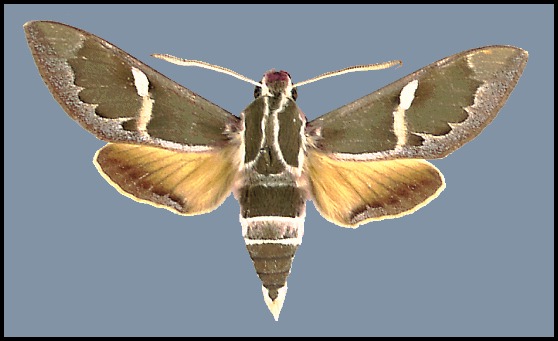
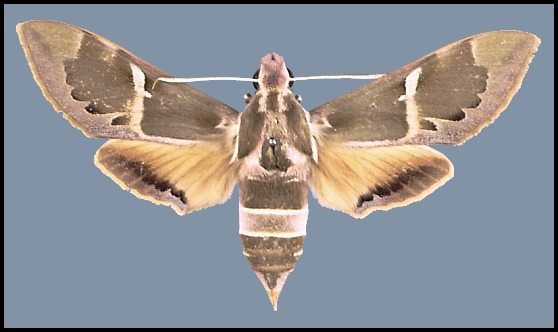
Wingspan: 65--81mm. Larger and generally paler than the nominate subspecies, with very large individuals occurring in the Zagros Mountains of Iran. Exhibits little colour variation except for the intensity of 'tints', which range, ventrally, from pale orange to deep pink. Newly-emerged examples often have a magnificent rose sheen. However, due to the fact that the dorsal green coloration fades in strong sunlight, those collected from drier regions tend to be paler than examples from more verdant areas. The same applies when killing agents such as diethyl ether and ethyl acetate are used.
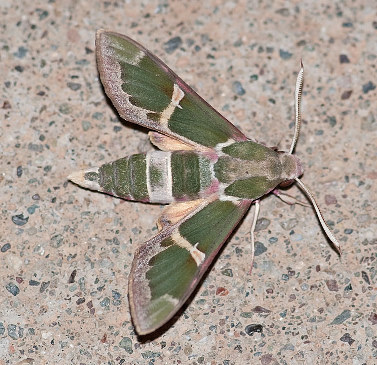
A local subspecies, occurring in well-defined colonies amongst richer than normal vegetation. Forms a cline with subsp. drilon where they 'overlap' in range in central Turkey. Occurs in mountainous areas, usually between 1500--2000m on steep, herb- and grass-covered hillsides, especially those strewn with boulders and grazed by livestock; also on the sides of rocky gullies (Pittaway, 1979a).
During daylight hours hides between boulders, or at the base of low vegetation, or even on the ground in some shady location. Light is very attractive, with large numbers often arriving over a short period.
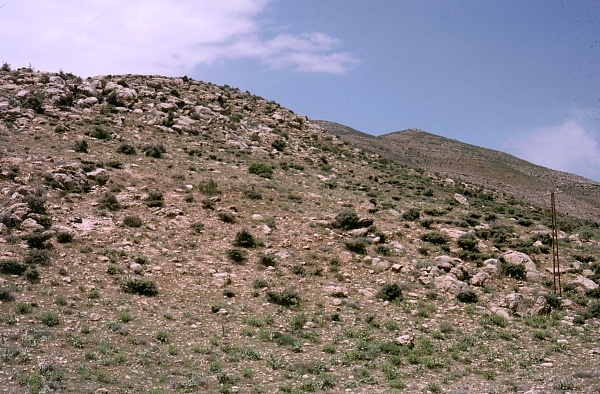
Usually the last two weeks of May, with a partial second brood in mid-August.
OVUM: Large (1.6 x 1.4mm), slightly oval. Initially, glossy blue-green with a faint, incomplete, whitish, encircling line which changes to brown after a few days. Prior to hatching, the whole ovum assumes a greyish colour (Pittaway, 1979a).
Laid singly, with up to five per plant, on the upper- and undersides of leaves, young stems, unopened flower-heads and even dead shoots. Preference is shown for clumps of basally-sprouting, little-grazed Rubia growing on the ground or between rocks in a dense mass, rather than those climbing up shrubs (Pittaway, 1979a).
LARVA: Full-fed, 80--100mm.
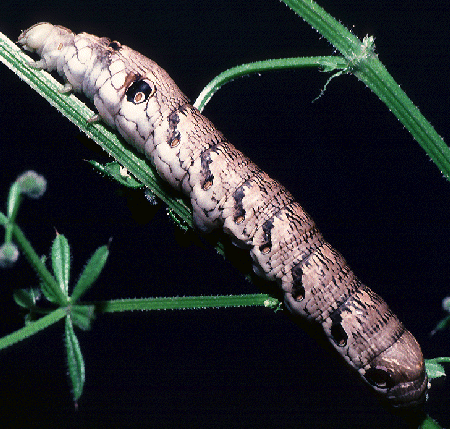
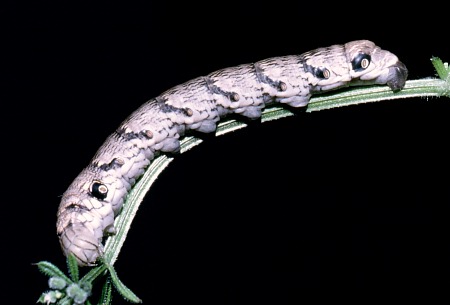
Newly hatched, the 4mm-long larva is bluish yellow with a small, black, upright horn, black prolegs and claspers. The light brown head is disproportionately large, as are the anterior segments which, together with the rest of the body, bear longitudinal rows of dark, bristle-bearing tubercles. Ignoring the eggshell, the larva commences to feed on plant material, with flower-buds and immature seeds being preferred. This causes the body colour to darken to bluish green, on which a white dorso-lateral line appears. In the second and third instars, the now cylindrical larva is frosty blue-green; this frostiness is imparted by a dense covering of very fine, white spots, each bearing a short, white bristle, and which even extend up the horn. The now brilliant white, dorso-lateral line extends from the green head to the short, straight, reddish horn. At this stage the larva feeds quite openly, day and night, amongst the flower-buds and leaves, relying on matching coloration for camouflage. However, if in immediate danger from predators or grazing animals, it drops down into the tangled mass of its hostplant (Pittaway, 1979a).
After the next moult a sudden transformation in appearance takes place: the green coloration and the horn are replaced by dark and light brown mottling and a small tubercle, respectively. The head is brown, with three fine, dark longitudinal stripes, whilst the spiracles of abdominal segments 1 and 8 are ringed in violet and yellow, set in a black blotch so as to resemble eyes. Feeding now takes place only at night, the larva hiding during daylight hours at the base of the hostplant or amongst debris and stones.
In its final instar, the appearance of the larva is striking. When alarmed, the head and first two thoracic segments are tucked under the third thoracic and the first abdominal segments which have become slightly swollen so that, dorsally, the whole animal resembles a small viper. This illusion is further enhanced by the larva swinging its false 'head' from side to side. If further disturbed, the larva will drop down amongst its hostplant, remaining in this viper-like position for up to an hour. Such a defence must be very useful as, in order to satisfy its large appetite, a fully-grown larva must now also ascend the hostplant two or three times during daylight hours to feed, thus exposing itself to predatory birds.
Feeds from late May to mid-June and again in September, as two generations.
Major Hostplants. Rubia and Galium spp. (Pittaway, 1979a), especially the flowers and immature seeds. On Rubia rigidifolia in Armenia (Danner, Eitschberger & Surholt, 1998).
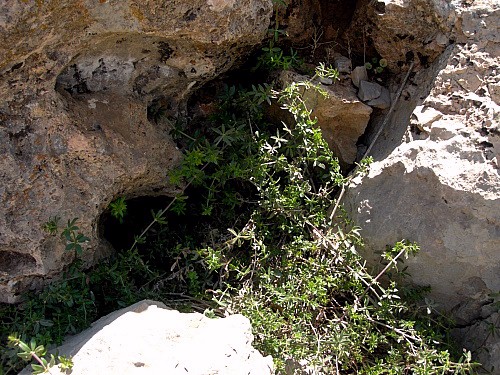
PUPA: 58--65mm. Slender, dark brown, almost black, with intersegmental cuticle reddish brown; very glossy and hard but also very mobile. Remarkable for its projecting, bulbous proboscis and elongated head region. Cremaster conical with a glossy tip. Formed between rocks or in a clump of plant debris inside a large, gravel- and soil-impregnated silken cell. The overwintering stage (Pittaway, 1979a).
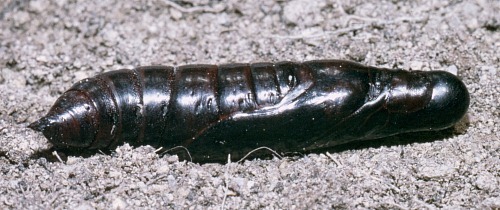

None recorded.
Eastern Turkey (Kemal & Koçak, 2016; Koçak & Kemal, 2018), the mountains straddling Jordan (Shawbak (Müller et al., 2005a)), Syria and Lebanon, Armenia (Khosrov Forest State Reserve (Didmanidze, Petrov & Zolotuhin, 2013; Heiner Ziegler, iNaturalist 2010; Karine Avetisyan, iNaturalist 2022), the Republic of Georgia (Didmanidze, Petrov & Zolotuhin, 2013), Azerbaijan (Valentinus Tikhonov, iNaturalist 2014; Snegovaya & Petrov, 2021), Iraqi Kurdistan (Wiltshire, 1957; Kemal & Koçak, 2018c), and from northern Iran south along the Zagros Mountains (Barou, 1967; Ghassemi, Alemansoor & Alehossein, 2010) to the rest of central, southern and eastern Iran (and maybe also western Afghanistan (Ebert, 1969)).
Recorded localities for the Republic of Georgia are Borjomi-Kharagauli National Park, Akhaltsikhe, Javakheti National Park, Lagodekhi National Reserve, and Vashlovani National Park.
A very sparsely distributed species, though large colonies sometimes occur in certain localities in Kurdistan between 1000-2000m altitude (Wiltshire, 1957). It may have a wider distribution than indicated due to the remote, inaccessible nature of its habitat.
Extra-limital range. None.
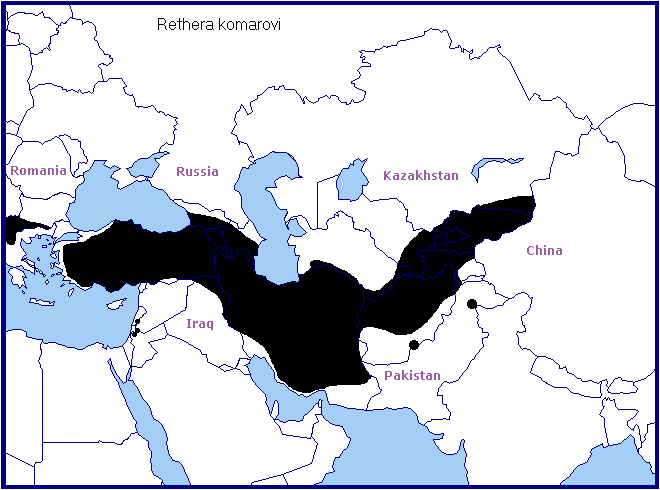
South-east Europe (northern Greece, Albania, the Republic of Macedonia, western Bulgaria) and western/central Turkey as subsp. drilon (Rebel & Zerny, 1931). Central and eastern Afghanistan (Ebert, 1969), Balochistan and the Hindukush area of western/northern Pakistan (leg. Z. Varga & G. Ronkay, ex coll. György Fábián, coll. Sphingidae museum of Czech Rep.), southern Uzbekistan (Western Gissar Mountains), Tajikistan (Derzhavets, 1984), Kyrgyzstan and southern and eastern Kazakhstan (Eitschberger & Lukhtanov, 1996) as subsp. stipularis (Swinhoe, 1885). The Kopet-Dagh mountains of northeastern Iran and southwestern Turkmenistan as subsp. komarovi (Christoph, 1885).
 Return to species list
Return to species list